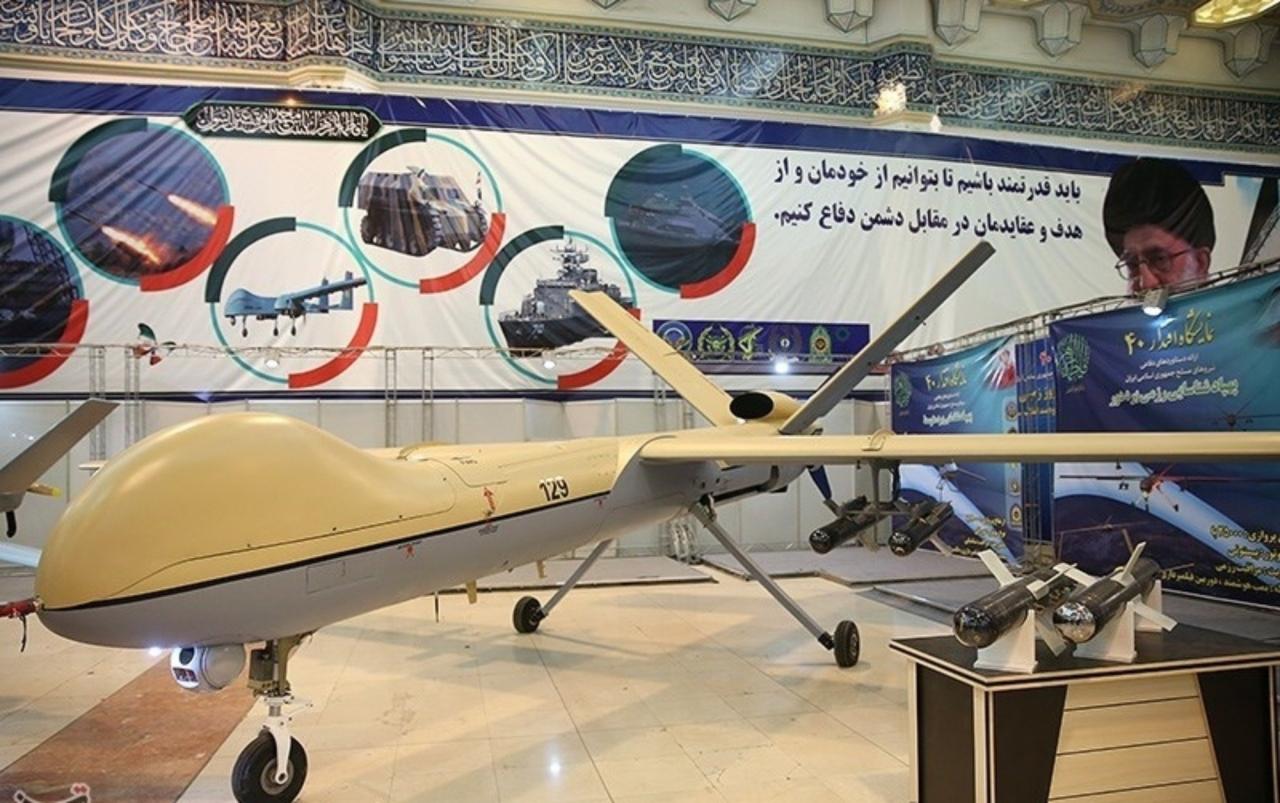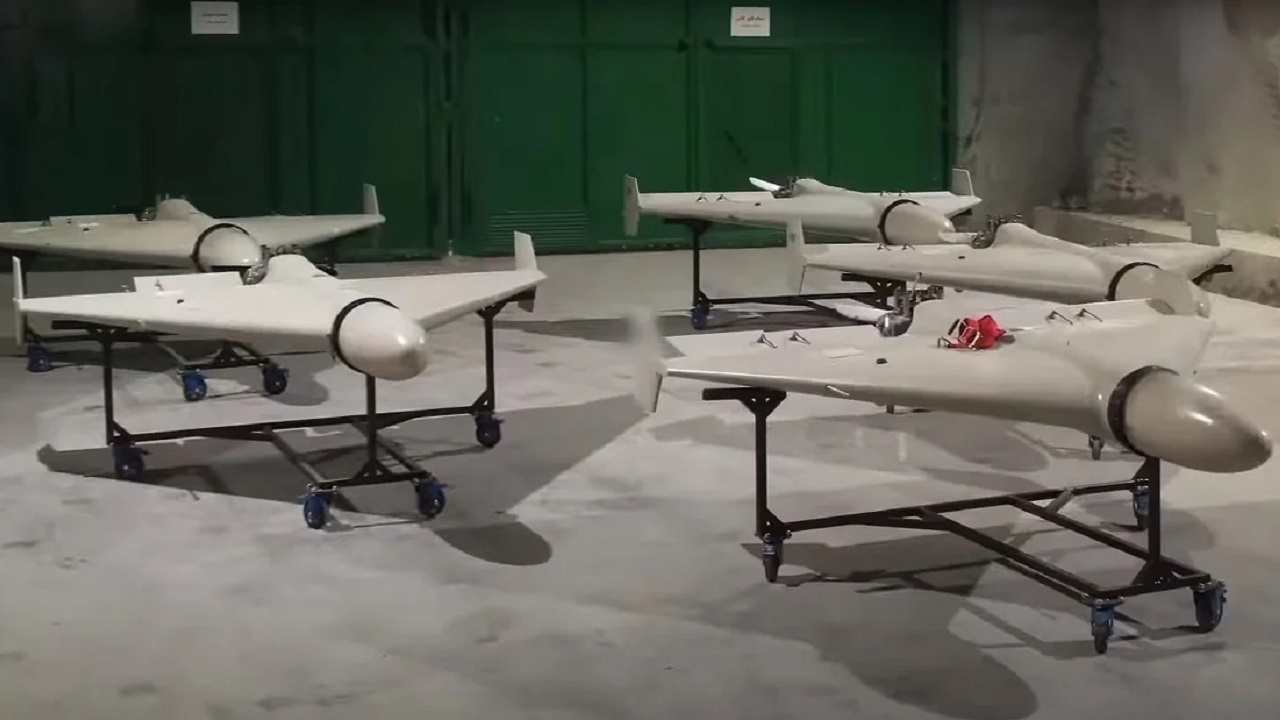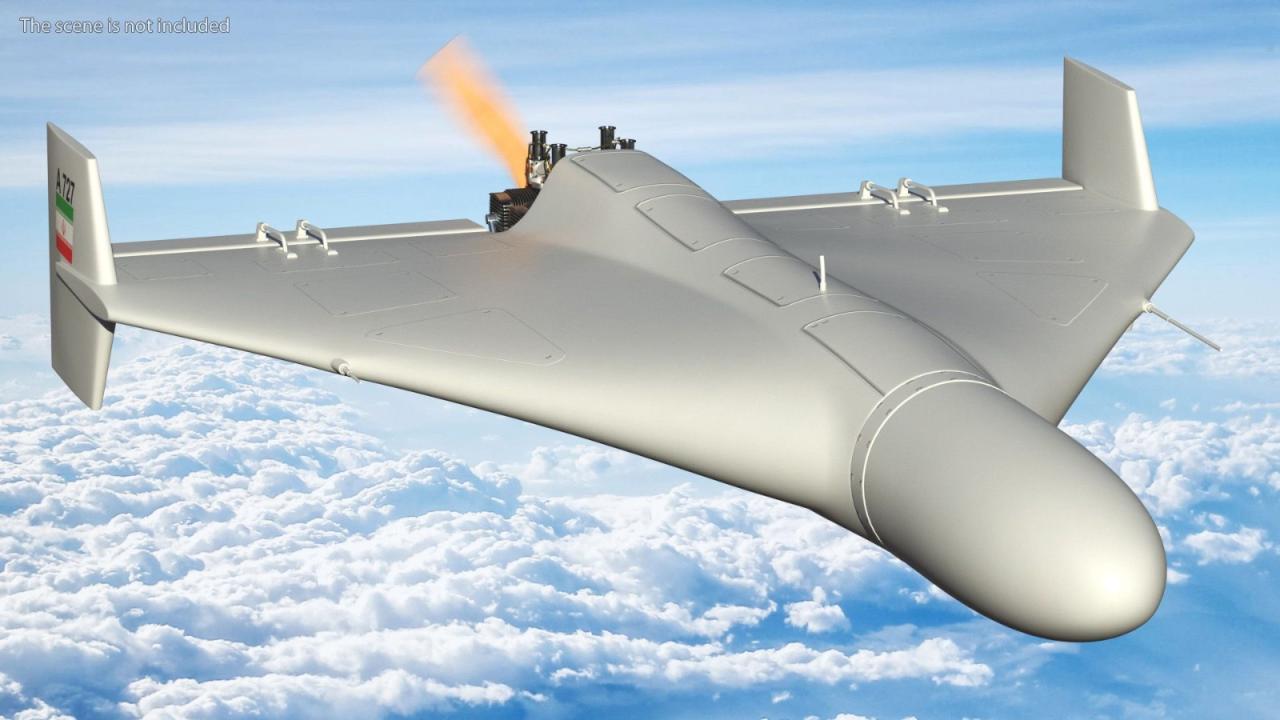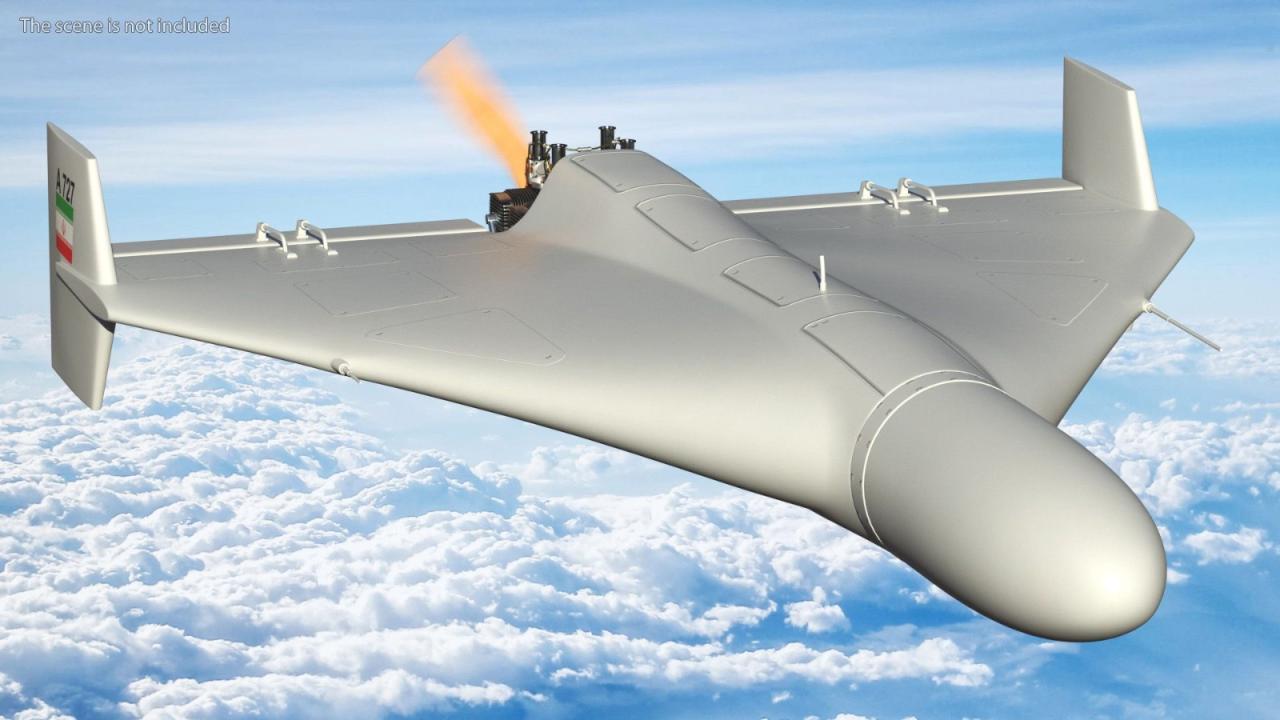Shahed drones, inexpensive and readily available, have significantly altered modern warfare. Their deployment by various actors has sparked global concern, raising questions about their tactical effectiveness, ethical implications, and the challenges of countermeasures. This examination delves into the technical specifications, operational capabilities, deployment strategies, countermeasures, and broader impacts of this increasingly prevalent technology.
From their relatively simple design to their devastating potential, Shahed drones represent a paradigm shift in asymmetric warfare. Understanding their capabilities and limitations is crucial for comprehending the evolving landscape of global conflict and developing effective responses.
Shahed Drone: A Comprehensive Overview
The Shahed drone, also known as the Shahed-136 or Geran-2, has emerged as a significant player in modern asymmetric warfare. Its relatively low cost, ease of deployment, and devastating potential have made it a subject of intense scrutiny and analysis. This overview will delve into the technical specifications, operational capabilities, deployment tactics, countermeasures, impact, and manufacturing aspects of this controversial unmanned aerial vehicle (UAV).
Shahed Drone Technical Specifications
The Shahed drone is a relatively small, expendable UAV designed for loitering and precision strike capabilities. Its construction prioritizes affordability and ease of production over advanced stealth technology. Key physical characteristics include a relatively small size and lightweight design.
The propulsion system utilizes a small, internal combustion engine, likely fueled by gasoline or a similar readily available fuel source. This contributes to its relatively low operational cost and ease of maintenance. The payload capacity is limited, typically carrying a high-explosive warhead of approximately 50 kg. The warhead is designed for maximum blast effect rather than sophisticated guidance systems.
| Specification | Shahed-136 | Bayraktar TB2 | Switchblade 300 |
|---|---|---|---|
| Wingspan | ~3.5 m (estimated) | 12 m | ~60 cm |
| Length | ~3.5 m (estimated) | 6.5 m | ~60 cm |
| Weight | ~200 kg (estimated) | 650 kg | 2.5 kg |
| Payload | ~50 kg (estimated) | 50-150 kg | ~3 kg |
Note: Specifications for the Shahed-136 are often subject to variation and are based on available open-source intelligence and analysis. The comparison table uses publicly available information on similar UAVs for context.
Shahed Drone Operational Capabilities

The operational parameters of the Shahed drone are crucial to understanding its tactical utility. Its capabilities are balanced towards cost-effectiveness and simplicity, rather than advanced performance metrics.
The drone’s flight range is estimated to be around 1,000-2,500 kilometers, depending on payload and wind conditions. Endurance varies accordingly, ranging from several hours to a full day. Its speed is relatively moderate, allowing for extended loitering and a longer operational window. Navigation primarily relies on pre-programmed waypoints, possibly supplemented by inertial navigation systems (INS) and Global Navigation Satellite Systems (GNSS).
Communication is likely limited to a one-way data link, sending limited telemetry back to the operator. Operational altitude is relatively low, increasing vulnerability to detection and interception. The drone’s maneuverability is limited, restricting its use in complex or contested airspace.
Shahed Drone Deployment and Tactics
The Shahed drone’s deployment methods and tactical applications are key factors in its effectiveness. Its relatively simple design allows for diverse deployment methods.
Typically launched from ground-based mobile launchers or possibly from adapted aircraft, the Shahed drone employs a swarm tactic, utilizing numbers to overwhelm air defenses. In combat scenarios, it is primarily used as a loitering munition, targeting fixed infrastructure and military assets. The drones are typically deployed in large numbers to saturate enemy defenses and increase the likelihood of successful strikes.
- Advantages: Low cost, ease of production, relatively long range, simple operation, swarm tactics.
- Disadvantages: Low precision, vulnerability to countermeasures, limited payload, lack of sophisticated guidance.
Significant deployments have included its use in the ongoing conflict in Ukraine, where its use has caused considerable damage and prompted international concerns. The timeline of deployments continues to evolve.
Shahed Drone Countermeasures

The effectiveness of countermeasures against Shahed drones is a critical aspect of mitigating their threat. A multi-layered approach is often necessary.
Countermeasures range from electronic warfare jamming and disruption of GNSS signals to the use of anti-aircraft artillery and kinetic interception systems. Effectiveness varies significantly depending on the specific countermeasure, the environment, and the skill of the operators. Challenges include the drone’s low flight profile, its relatively small radar cross-section, and the sheer number of drones deployed in swarms.
A flow chart for selecting appropriate countermeasures would consider factors such as the number of incoming drones, their trajectory, the available defense systems, and the overall threat assessment. This would necessitate a dynamic decision-making process to adapt to evolving situations.
Shahed Drone Impact and Implications
The proliferation of Shahed drones has far-reaching implications across multiple domains.
Military strategies are adapting to incorporate both offensive and defensive measures related to this type of inexpensive, easily produced drone. Geopolitically, its spread impacts the balance of power, enabling less technologically advanced nations to project military power. Ethically, the relatively indiscriminate nature of its attacks raises serious concerns about civilian casualties and the blurring of lines in warfare. Economically, the low cost of production makes it accessible to a wider range of actors, altering the cost-benefit analysis of military engagements.
Shahed Drone Manufacturing and Acquisition

Understanding the production and acquisition of Shahed drones is vital for effective countermeasures and arms control.
Iran is the primary manufacturer, with potential involvement of other actors in component supply and assembly. The production process involves relatively simple assembly techniques, contributing to its scalability and low cost. Acquisition methods vary, ranging from direct state-to-state transfers to less transparent channels involving intermediaries and proxy groups. A visual representation of the manufacturing process would show a relatively straightforward assembly line, with modular components being integrated into the final drone.
The Shahed drone, a relatively inexpensive unmanned aerial vehicle, has gained notoriety for its use in recent conflicts. For more detailed specifications and operational information on this controversial technology, you can visit the informative resource on the Shahed drone itself: shahed drone. Understanding the capabilities and limitations of the Shahed drone is crucial for analyzing its impact on modern warfare.
This process reflects the emphasis on simplicity and ease of production.
The Shahed drone, a relatively inexpensive and readily available UAV, has raised significant concerns globally. Its proliferation highlights the need for robust drone regulations, such as obtaining a proper transport canada drone license if operating in Canadian airspace. This underscores the importance of responsible drone use and the potential consequences of unregulated operations involving the Shahed drone or similar technologies.
The Shahed drone’s impact extends far beyond the battlefield. Its affordability and ease of use have democratized access to drone technology, leading to a proliferation of these weapons systems globally. Addressing the ethical, geopolitical, and security challenges posed by Shahed drones requires international cooperation and a comprehensive understanding of their capabilities, limitations, and potential for future development. The ongoing evolution of this technology necessitates continuous adaptation and innovation in countermeasures and strategic planning.
Common Queries
What is the lifespan of a Shahed drone?
The operational lifespan varies depending on usage and maintenance, but it’s generally considered to be relatively short compared to more sophisticated drones.
How accurate are Shahed drones?
Their accuracy is debated, with reports suggesting varying degrees of precision depending on factors like targeting systems and environmental conditions. They are generally considered less precise than more advanced drones.
Are Shahed drones easily detectable?
Their detectability depends on various factors, including radar systems, electronic warfare capabilities, and environmental conditions. However, their relatively small size and low-flying capabilities make them challenging to detect in some situations.
